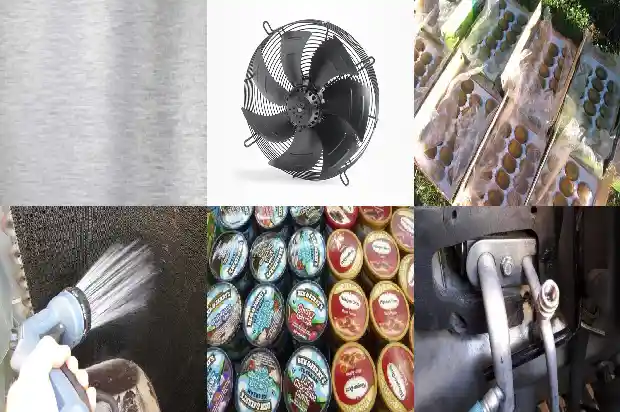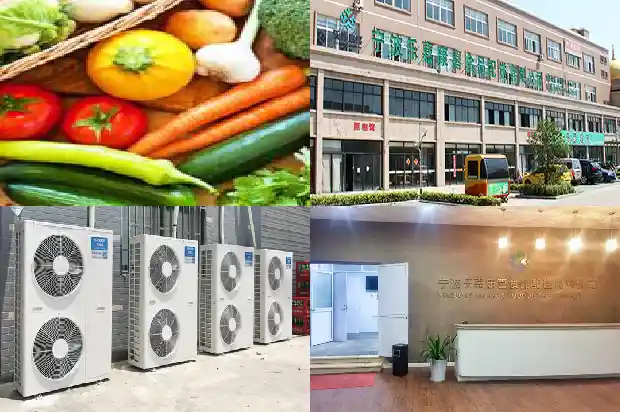Advanced Guide! Design and Installation of Refrigeration System Pipelines
2025-02-25
- Principles of Pipeline Layout
- Piping should be as short and straight as possible to reduce the refrigerant charge and lower the pressure drop.
- Select a reasonable pipe diameter to avoid excessive pressure drop, which may lead to a decrease in cooling capacity and refrigeration efficiency.
- It is necessary to ensure that an appropriate amount of refrigerant is supplied to the evaporator and that the refrigeration cycle can be completed.
- Set a certain slope and slope direction.
- When transporting liquid, an inverted U - shape is not allowed in the design; when transporting gas, a U - shape is not allowed in the design.

- Prevent lubricating oil from accumulating in other irrelevant parts of the refrigeration system, as it may cause the compressor to run out of oil.
- When the refrigeration system is shut down, prevent liquid from entering the compressor to avoid wet compression during startup.
- Materials for Pipeline Selection
The Freon system mainly uses copper pipes; the ammonia system uses seamless steel pipes. - Design Principles of Refrigerant Pipelines
I. Freon Pipelines:
- For the Freon suction pipeline system, for oil return, the slope should be ≥ 0.01, sloping towards the compressor.
- For the Freon exhaust pipeline, for oil return, the slope should be ≥ 0.01, sloping towards the oil separator or condenser.
II. Ammonia Refrigeration System Pipelines: - The slope of the suction pipe of the ammonia compressor should be ≥ 0.003, sloping towards the evaporator, liquid separator, or low - pressure circulation receiver to prevent liquid droplets from entering the cylinder when the machine stops.
- For the ammonia refrigeration exhaust pipeline, for oil return, the slope should be ≥ 0.01, sloping towards the oil separator or condenser.
III. For systems with multiple groups of evaporators, double suction risers are used to enable the system to bring lubricating oil back to the compressor from the suction risers under low - load conditions.
IV. For compressors with capacity regulation, it should be considered that under low - load conditions, lubricating oil can be carried away from the exhaust risers, and double exhaust risers are used.
V. The liquid pipe from the Freon condenser to the receiver: - If there is a valve between the condenser and the receiver, the valve should be installed at least 200mm away from the lower outlet of the condenser.
- The liquid pipe flow velocity at full load should be ≤ 0.5m/s.
- The horizontal pipe section should have a slope of not less than 0.01, sloping towards the receiver.
VI.
Pipeline Design between the Receiver and the Evaporator:
- When a regulating station is used, the cross - sectional area of the distribution main pipe should be larger than the sum of the cross - sectional areas of each branch pipe.
- Pipeline Design of the Safety Valve
The diameter of the safety valve pipeline should not be smaller than the nominal diameter of the safety valve. When several safety valves share a common safety main pipe, the cross - sectional area of the safety main pipe should be larger than the sum of the cross - sectional areas of each safety valve branch pipe. The discharge pipe should be 5m higher than the ridge of the tallest building (except cold storage) within 50m around, and there should be a rain - proof cover, measures to prevent lightning strikes, and measures to prevent foreign objects from falling into the pressure - relief pipe.
- Installation Guidelines for Refrigerant Pipelines
I. Installation:
- For the refrigerant vapor suction pipe, the decrease in saturated temperature should not be greater than 1℃.

- For the refrigerant vapor exhaust pipe, the increase in saturated temperature should not be greater than 0.5℃.
- The valves of refrigeration equipment and pipelines should all undergo individual pressure tests and tightness tests.
- The pressure of the strength test is 1.5 times the nominal pressure, and there should be no leakage when the pressure is maintained for 5min.
- For the tightness test, the pressure is 1.1 times the nominal pressure, and it is considered qualified if there is no leakage within a duration of 30s.
- Individual pressure test of refrigerant pipeline valves.
II. Requirements: - When a branch pipe is led out from a liquid main pipe, it should be connected from the bottom or side of the main pipe.
- When a branch pipe is led out from a gas main pipe, it should be connected from the top or side of the main pipe.
- The liquid supply pipe should not have upward - convex bends, and except for the specially - designed oil return pipe, the suction pipe should not have downward - concave bends.
- When a pipe passes through a wall or floor, a steel sleeve should be installed. The gap between the welding and the sleeve should be about 10mm, and it should be filled with thermal insulation material and should not be used as a support for the pipe.
III. Requirements for Elbows and Tees: - The bending radius of the elbow should not be less than 4D, the ovality should not be greater than 8%, and welded elbows or corrugated elbows should not be used.
- When making a tee, the branch pipe should be connected to the main pipe with a 90 - degree arc upward in the direction of the medium flow, and it is not advisable to use a pressed elbow with a bending radius of less than 1.5D.
Related Articles
- What Are the Acceptance Standards for Cold Storage Design and Installation?
- HVAC Design | Basics of Cooling Towers
- 【HVAC Design Summary】 - Free Cooling with Cooling Towers
- Fin Spacing Design of Cooler and Several Knowledge Points of Defrosting in Cold Storage
- Precautions for Cold Storage Design
- What issues should be noted during the installation of a small - scale cold storage?
- Instructions for Welding and Drainage in the Installation of Refrigeration Equipment Pipelines
- What is the Correct Operation Method of the Distribution Box during Cold Storage Installation?
- What Issues Should Be Noted in Cold Storage Installation and Construction?
- What Special Requirements are There for the Installation of Tea Cold Storage?
- Operating Principle and Standard Installation Steps of Multi - split Systems in Refrigerant Air - conditioning Systems
- How to Identify the Quality of Refrigeration Equipment Installation Materials?
- How to Identify Installation Materials for Refrigeration Equipment
- Knowledge, Installation and Maintenance of Cold Storage Systems
- Precautions for the Installation and Use of Water Flow Switches
- What safety measures should be paid attention to during the installation of cold storage?
- What are the precooling methods after the installation of cold storage?
- Selection and Installation of Thermal Expansion Valves
